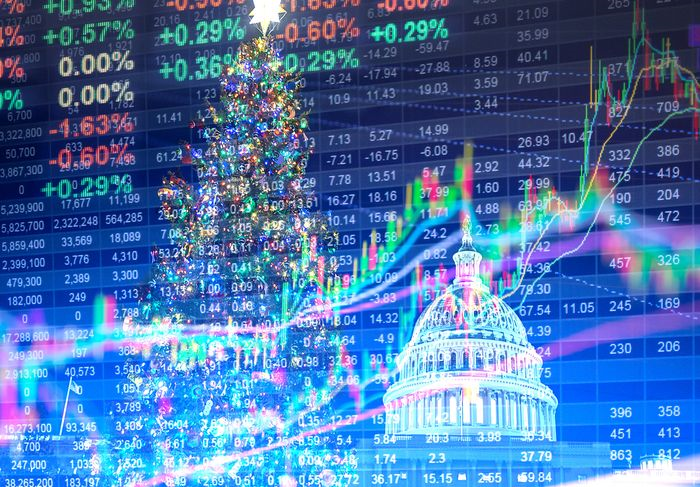Federal Reserve's inflation battle in 2022 will hinge on economic growth

U.S. financial markets have been pretty smooth sailing for investors this year, with the Federal Reserve's easy-money policies helping to iron out rough patches during the pandemic.
In the final weeks of December, the S&P 500 index was up 23% on the year, while U.S. "junk bond" yields with speculative-grade ratings were near historic lows around 4.5% . The broad stock market rally has made it easy to draw links between soaring asset prices and the Fed's bond buying program and heaps of fiscal aid from Washington.
But that's all about to change with Fed Chairman Jerome Powell now squarely focused on keeping sharply higher costs of living from derailing the U.S. economy, and with investors expecting 2022 to be when markets really get interesting.
"I think inflation is the variable for 2022, because that's going to be what drives policy," said Jim Caron, senior portfolio manager at Morgan Stanley Investment Management, in a phone interview Friday. "Policy has been driving asset performance."
And with policy something of a wild card in the coming months, particularly as the government looks to tamp down price pressures, without hamstringing the economy, Caron said he's urging investors to keep some cash on hand for buying opportunities in what could be "a very volatile and choppy year."
Inflation matters, so does growth
U.S. stocks tumbled to their worst weekly losses in three weeks Friday, after the Fed on Wednesday outlined more aggressive plans to end its massive bond-buying program and penciled in three benchmark interest rate increases next year.
Over the next few months, investors will look for the U.S. central bank to engineer a soft landing for markets as it attempts to switch gears and tighten accommodative monetary policies to fight inflation running at 1980s levels, but also keep the economy advancing.
Like Europe, the U.S. also may need to balance policy with potential economic setbacks as coronavirus variants begin to drive another startling wave of winter COVID-19 infections and restrictions on consumer and business activity.
"If GDP growth disappoints and inflation remains high, it will be tough for the Fed to raise rates 75 basis points next year," said D.A. Davidson's James Ragan, director of wealth management research.
While Fed officials increased their 2022 GDP growth forecast to 4% next year from 3.8% earlier, still above the historical trend, that's lower than the 5.5% growth expected this year. "That type of GDP growth should support Fed rate increases and higher long-term rates," Ragan said, in a phone interview. Although, with the 10-year Treasury yield near 1.4%, Ragan said the bond market has been exhibiting some doubts about how much room the Fed may have to interest raise rates in the next 12 months.
"I think bond investors are still concerned about long-term growth prospects, and a little worried that three rate hikes might be a little too much," he said.
For stocks, Ragan worries about high valuations and uncertainty about future corporate earnings, particularly if inflation slows economic activity, consumers pull back spending or wage pressures translate to lower company earnings.
"That's something to keep an eye on in early 2022," he said.
'Right thing' to do
Stephen Philipson, head of U.S. Bank's fixed income and capital markets group, said the Fed's more "aggressive stance is the right thing to do to counter stubborn inflation," particularly with so much liquidity sloshing through financial markets during the pandemic.
Philipson said he also sees looming interest rate increases as a likely catalyst for U.S. investment-grade companies to refinance some $1.25 trillion in debt coming due from 2023 and 2025, with coupons above 3%.
"There's a meaningful amount of debt that could be pulled forward to refinance," he told MarketWatch. "We've been calling for slightly down supply for the year, but I think with the Fed taking a more aggressive approach, it could accelerate refinancing of bonds coming due over the next few years."
The Dow Jones Industrial Average ended a volatile week 1.7% lower, while the S&P 500 ended down 1.9%. The Nasdaq Composite Index tumbled 3%, with all three booking the worst week of declines since Nov. 26, according to Dow Jones Market Data.
Midweek, before Friday's Christmas Eve holiday, will see a fresh slate of U.S. economic data, including December's updated consumer confidence index and existing home sales on Wednesday. But it will be Thursday with a deluge that includes weekly initial jobless claims for the week of Dec. 18, but also November updates on core inflation, personal income, consumer spending, durable goods orders and more.
精彩评论